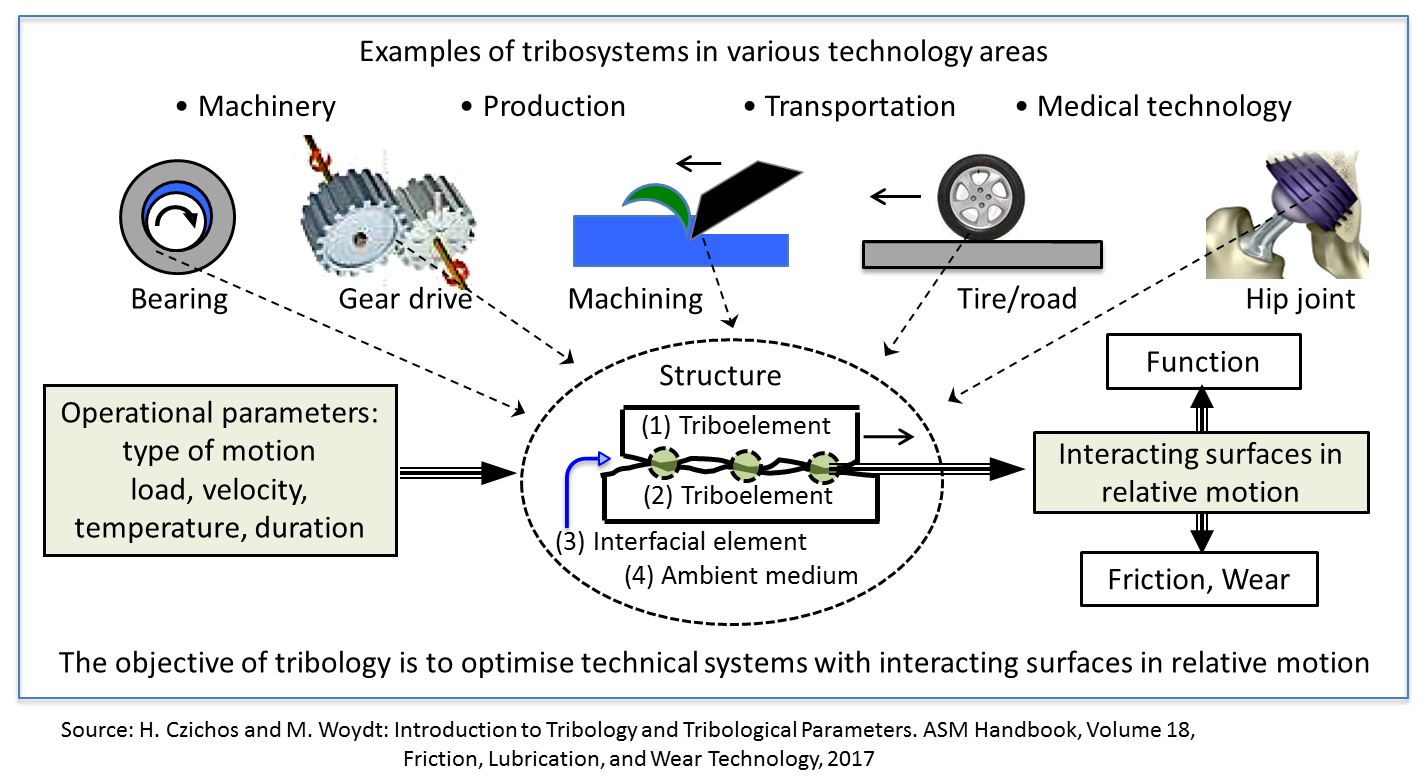“Tribology is the science and technology of mutually interacting surfaces in relative motion. It encompasses the entire field of friction and wear, as well as lubrication and the corresponding interfacial interactions between solids, between solids and liquids, or between solids and gases”. (This definition is in conformance with the former standard, DIN 50323.) Hence, an important objective of tribology is to optimise moving systems functionally, economically, as well as ecologically.
The tribological system constitutes the basis for describing and analysing tribological problems:

An estimated annual loss between 2 and 7 per cent of the gross national product results from friction and wear in every industrialised country.
The increasing application of tribological information can result in considerable savings in the consumption of energy and material, as well as in production and maintenance costs. Energy and raw material resources can be conserved, environmental damage can be avoided, and occupational safety and protection can be improved.
The application of tribology in engineering encompasses all phases of development, design, construction, manufacturing, and maintenance of moving mechanical systems in a multitude of industrial and economic fields.

